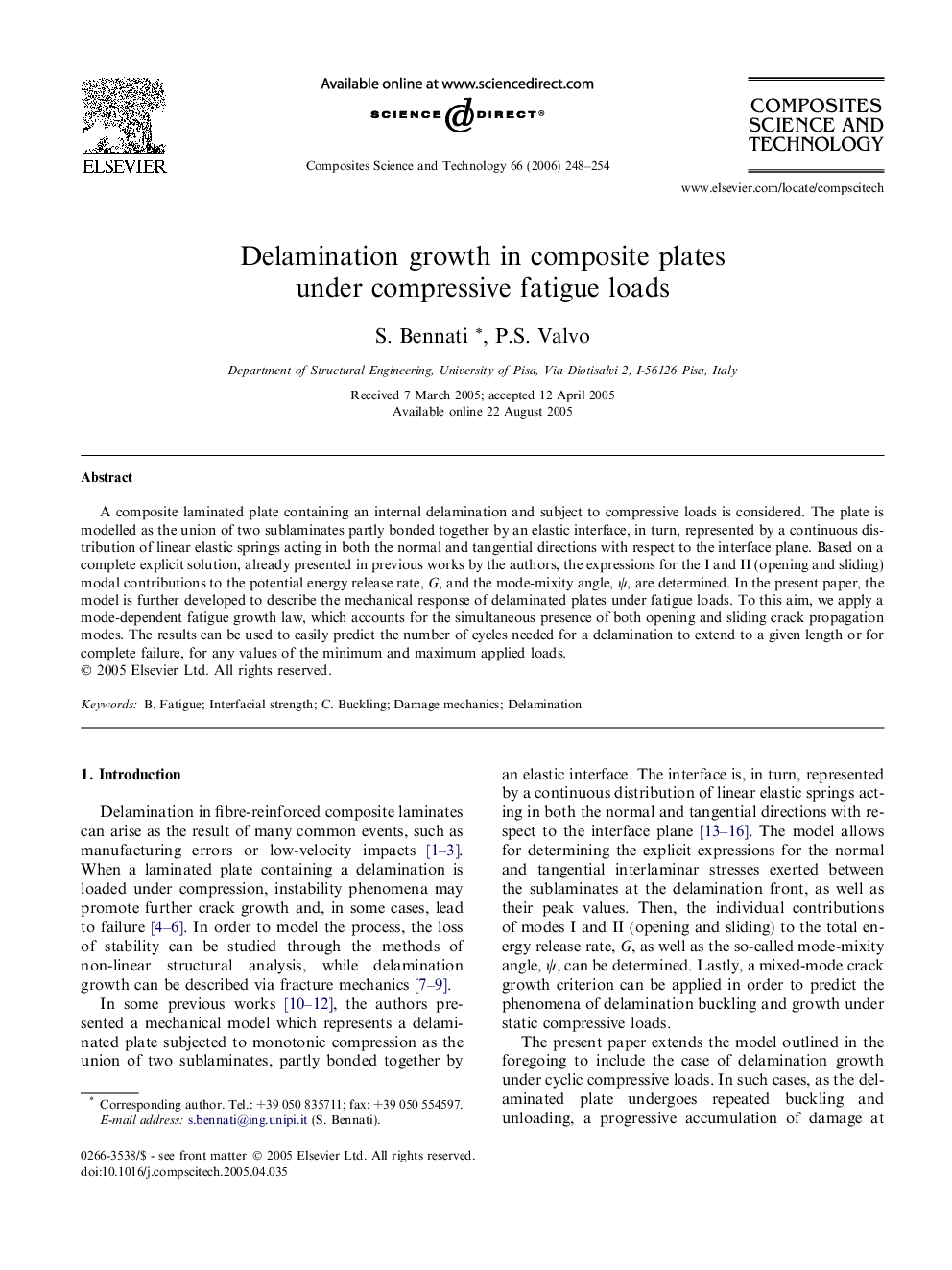| Article ID | Journal | Published Year | Pages | File Type |
|---|---|---|---|---|
| 821903 | Composites Science and Technology | 2006 | 7 Pages |
A composite laminated plate containing an internal delamination and subject to compressive loads is considered. The plate is modelled as the union of two sublaminates partly bonded together by an elastic interface, in turn, represented by a continuous distribution of linear elastic springs acting in both the normal and tangential directions with respect to the interface plane. Based on a complete explicit solution, already presented in previous works by the authors, the expressions for the I and II (opening and sliding) modal contributions to the potential energy release rate, G, and the mode-mixity angle, ψ, are determined. In the present paper, the model is further developed to describe the mechanical response of delaminated plates under fatigue loads. To this aim, we apply a mode-dependent fatigue growth law, which accounts for the simultaneous presence of both opening and sliding crack propagation modes. The results can be used to easily predict the number of cycles needed for a delamination to extend to a given length or for complete failure, for any values of the minimum and maximum applied loads.
